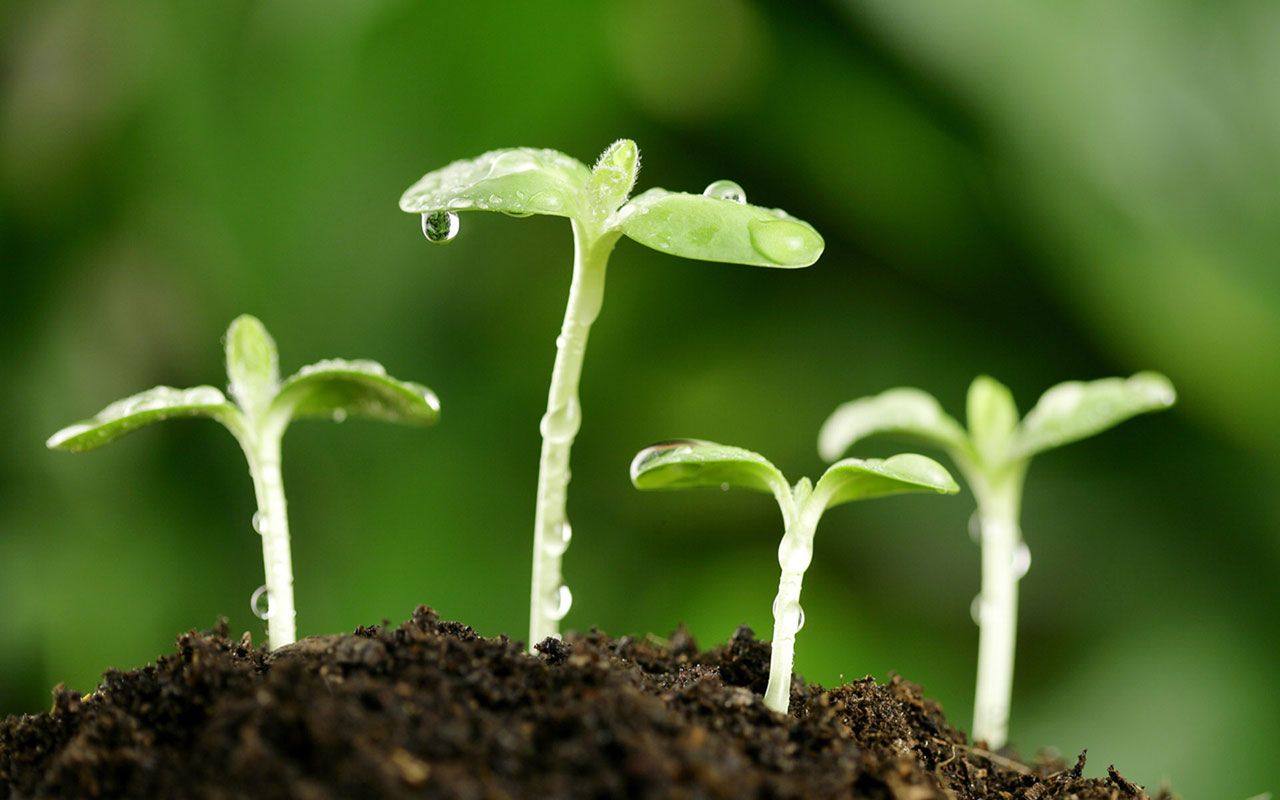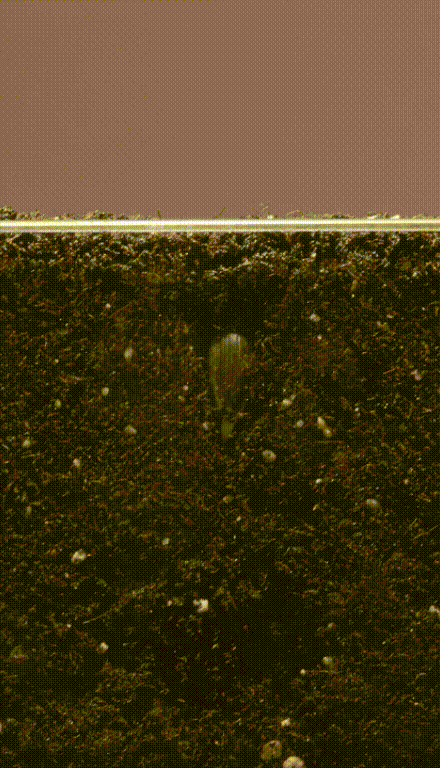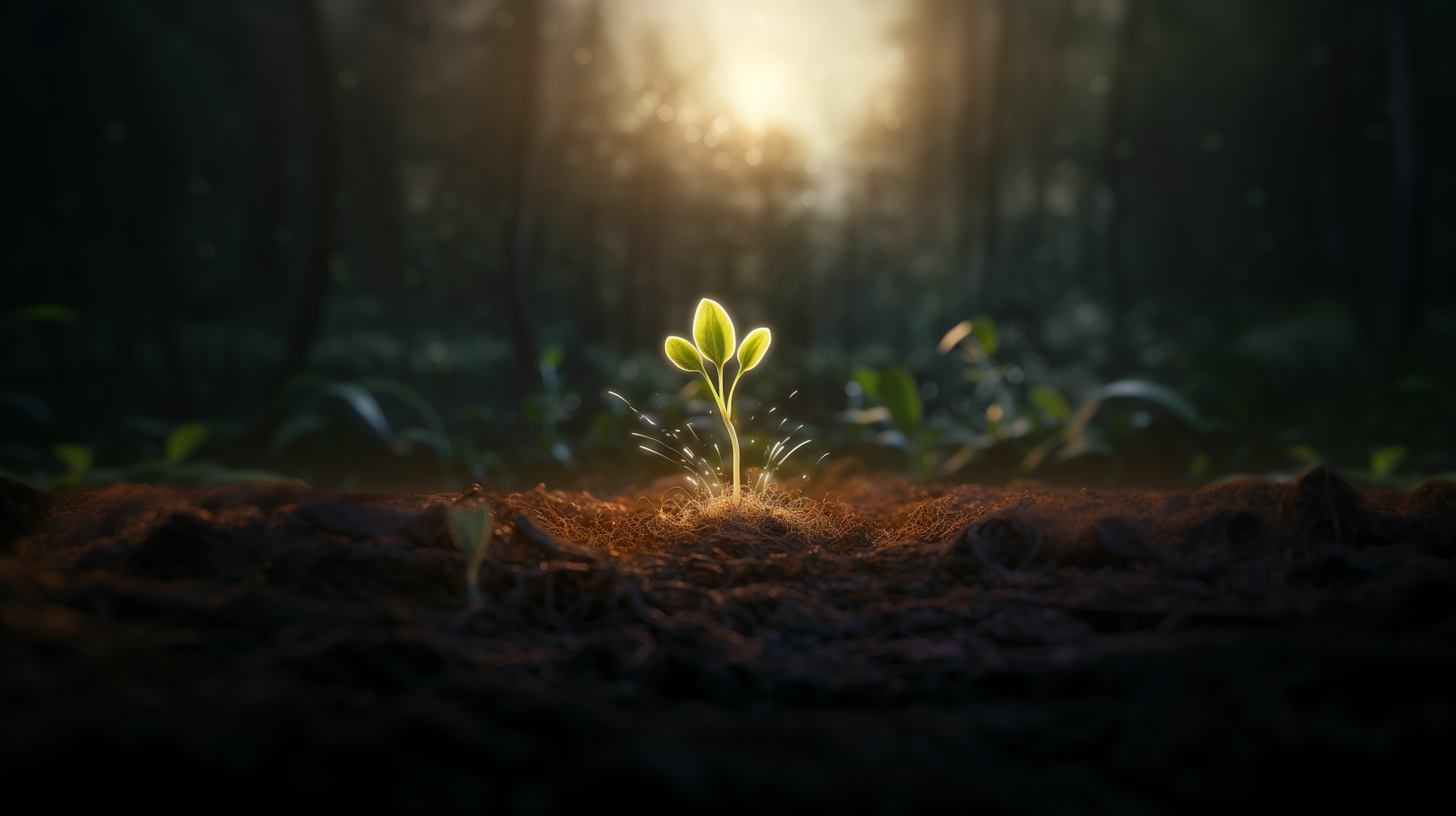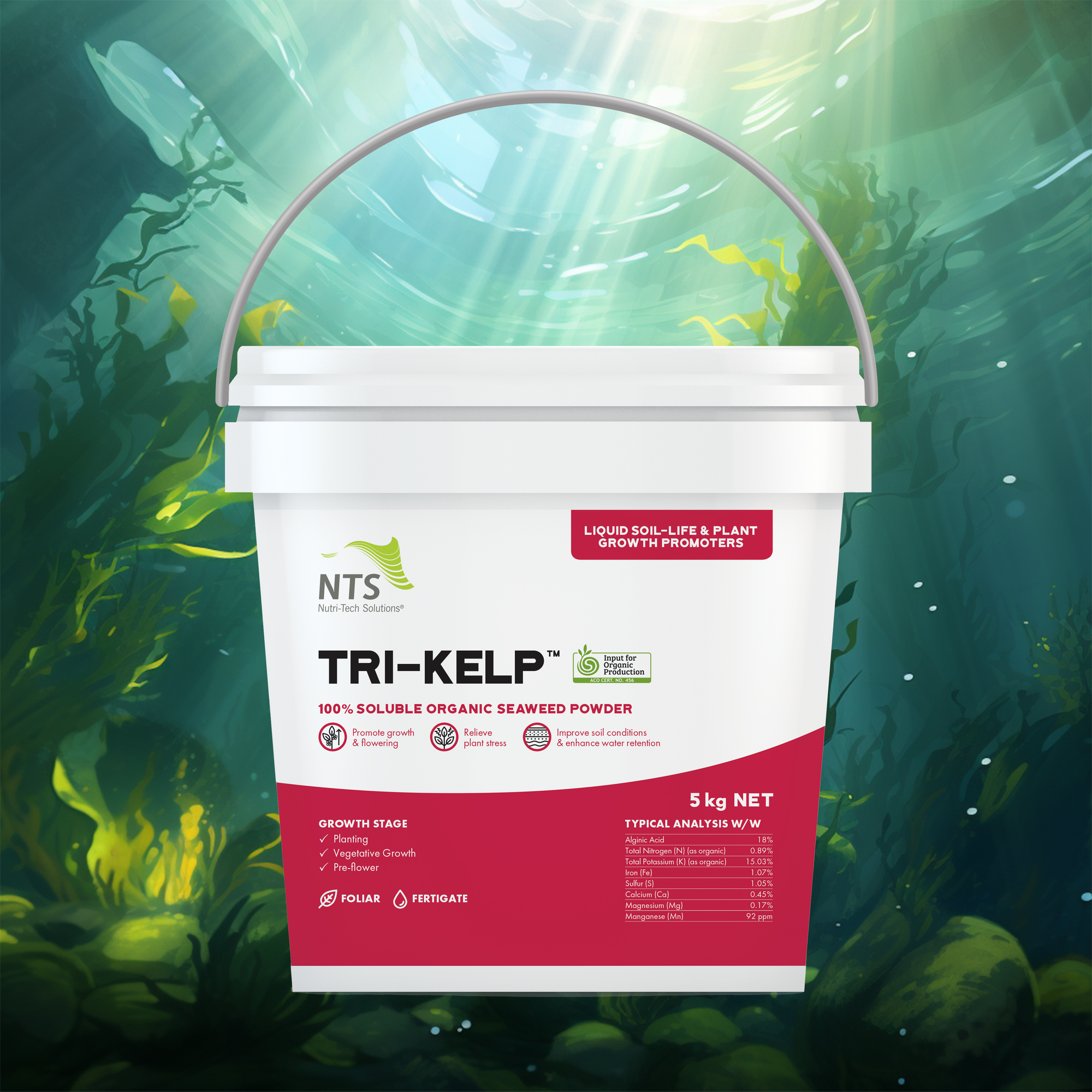Seed Treatment - The Biggest Bang of All

In a world of ever-increasing input costs, it can be of tremendous benefit to embrace low-cost strategies with big benefits. Seed treatment most certainly qualifies. Here, we are often talking about costs amounting to a couple of dollars per hectare, and there is, quite simply, nothing else you will do on the farm with a better cost-to-benefit ratio. Indeed, in this context, it would be crazy not to embrace some form of seed treatment.
Let's begin by discussing the rationale for this practice.
I often refer to the "Rule of Seven" when discussing seed treatment. This is the concept of the first seven days in the paddock life of a seed or a seedling, impacting the subsequent health and yield of that plant. When we talk about tree seedlings, that "rule of seven" extends to the first seven weeks. In that instance, you set up that fruit tree with everything it needs for a good start, and the ongoing rewards can be profound.
The provision of ideal conditions for a seed or seedling is comparable to the power of mother's milk in setting up a good start. That increased early root and shoot growth, along with improved germination and survival rates, will invariably translate into yield and health improvements.
Let's take a closer look at the magic of germination.
Germination dynamics
The seed is essentially a miniature, dormant plant, encased within a protective covering. It has all the essentials to enter the world and continue nature's reproductive quest. However, we can assist this transition from dormancy and ensure a flourishing start with small amounts of key substances.
The first stage of germination is called "imbibition". That's actually a quiz question during my five-day course that very few get right. Imbibition involves the absorption of water that triggers the germination process. In fact, sometimes, the simple process of adding ten litres of water per tonne of seed, before sowing, can provide gains without any added nutrition.
Germination could be described as the resumption of growth after a period of arrested development, as that is effectively what is happening. The first organ to emerge is the young root called the "radicle". It is pretty clear that this emerging root becomes our target. Increased early root development means greater access to soil volume, and the nutrients and moisture present in that soil. It also means that when the shoot develops, photosynthesises, and contributes 30% of its sugar to the soil life, that larger root system means a greater microbial workforce.
While we consider microbes, it might be of value to introduce you to what may be a new concept. The seed is not just a dormant plant waiting to recommence growth. That seed also contains a host of microbes that will help facilitate that kickstart. This reservoir of life within the seed is called the "endosphere", and obviously, we would not want to compromise that kickstart by killing this microbe army before we even get started.
Unfortunately, that's what we are risking with "pickled" seed - the term for the vast majority of seed that is treated with fungicides or pesticides. Organic apples have been found to host 100 million probiotic organisms within their seeds. However, conventional apples contain none of these beneficials because the systemic farm chemicals kill them.
If you can source clean seed, then you can protect that seed from early damping-off diseases very effectively with a trichoderma seed treatment (Tricho-Shield from NTS). That way, the young plant will still receive the support it was intended to be gifted when the biology nurtures that emerging seedling from the very start.

What is a good seed treatment?
There are four components to a good seed treatment. These include key minerals, bio-stimulants (including natural hormones), beneficial microbes, and microbe food to kickstart that workforce in the root zone, or rhizosphere.
Let's begin by considering the minerals most needed for a kickstart. The starting point must always be manganese, a mineral often called "the seed energiser". This mineral is an absolute essential in any seed treatment. Manganese sulphate has been shown to deliver the best response of all manganese inputs as a seed treatment. I think it's important to realise how little is required at this tender stage. Reviewing some of the research on manganese seed treatment, I feel they are using too much of this mineral. In these studies, there are signs of reduced uptake of other minerals despite the benefits from the manganese. They are giving with one hand and taking with another. It's important to realise that a 1% concentration of a mineral involves 10,000 ppm of that mineral if you were to add one kg of manganese sulphate per tonne of seed. You are effectively adding 250,000 ppm per tonne. Now if that seeding rate was 50 kgs per hectare, then you are effectively adding 12,500 ppm of manganese to that 50 kgs of seed per hectare i.e., you are dividing 250,000 by 20. In my opinion, that's actually too much for a few kgs of tiny seed, seeking a leg up.
The second mineral consideration, particularly in broadacre cropping, is zinc. There are so many zinc shortages in dryland farming. There are multiple studies on zinc as a seed treatment, and it appears to offer exceptional benefits. One Egyptian study involving chickpeas reported that zinc seed treatments significantly improved leghemoglobin content, nodulation, grain yield, grain Zn yield, grain bioavailable Zn, grain minerals and grain Zn concentration, compared with control treatments. The yield increases were 2.73 tonnes more than the control. This is a super productive outcome, and there are many similar stories in cereal crops. Just understand your investment. If you were to apply 500 grams of zinc sulphate monohydrate per tonne of seed, for example, that equates to a cost of around £1 per tonne, or 5 pence per hectare. It's almost free!
The big gain of zinc treatment relates to the production of auxins. These are the natural hormones that govern root and shoot production, and auxins are zinc-dependent. Several studies have reported a doubling of auxin levels following a zinc seed treatment.
Our next considerations are molybdenum and boron, two of the trace minerals most missing. Here we are talking about smaller amounts. For example, we might be looking at less than 200 grams of sodium borate per tonne of seed and 200 grams of sodium molybdate.
Copper can be of value, but this mineral is biocidal, and you can't add biology if copper is present. When you discover what certain biology can offer the emerging plant, I think you will realise that a copper inclusion may be too big of a price to pay.
Calcium and phosphate are the other two components that will prove of benefit, and I favour dusting damp seed with micronised guano for best response. Micronised guano powder contains calcium, phosphorous and silica at luxury levels but the content of manganese and zinc also involves thousands of ppm.
So that's the mineral component, and we are talking a total of perhaps two dollars per hectare.

Stimulants for seed treatment
There are several seed treatment options which can generate an early momentum that invariably carries through to harvest, assuming you don't mess up crop nutrition. The appeal here, once again, is that you can exact a great response for a minimum investment.
Fulvic acid is a well-researched seed stimulant. This natural PGP has been shown to increase speed germination and improve germination rates, while promoting root development of the seedling. The increased permeability of the plant cell membranes means enhanced nutrition uptake to promote early vigour. There is also considerable evidence of reduced susceptibility to pests and diseases.
All of these benefits can be accessed using our leonardite-based NTS Fulvic Acid Powder™ at 1 kg per tonne of seed. That works out at a cost of around $1 per hectare. It is important that you select a leonardite-based source of fulvic acid, as you may need to use at least double the suggested application rate if you are using a lignite-based fulvic acid powder.
My second suggestion for a seed stimulant is probably the most researched and most productive option of all. That involves treating seed with seaweed extracts. These kelp extracts contain four natural growth hormones, three of which are of benefit at germination. They also contain polyphenols, vitamins, alginates and chelating agents, like mannitol. It really is a perfect package to kickstart a seedling, and it also serves to stimulate the soil life in the root zone.
One Brazilian study involving floriculture and seed treatment of marigold seed reported an impressive outcome. The results showed that the seaweed extract enhanced all parameters related to seed germination and seedling growth and development. In this study, marigold seed germination increased two-fold, and there was an 84% increase in seedling height. Both fresh and dry shoot mass and root morphology were also significantly improved following the kelp seed treatment.
Once again, the cost can be minimal. Seed treatment with our Tri-Kelp™ Soluble Seaweed powder, for example, involves just 1 kg per tonne and once again, costs around one dollar per hectare.

Amino acids are another consideration. They can serve to spark a variety of beneficial biochemical processes including enhanced resistance to environmental stress (abiotic stress). Several seed treatment studies have reported some interesting findings relative to amino acids.
In a 2012 study, Marschner demonstrated that the common amino acids, glutamic acid, and glycine are precursors of chlorophyll synthesis, which enhances photosynthetic activity. In 2015, Hildebrandt also showed that amino acids are involved in a variety of photosynthetic structures, due to the fact that they are an integral part of the protein building blocks involved.
It is fascinating to recognise that some of the nutrients that humans desperately require for health and resistance are also required for the same purpose in plants. Three amino acids that together form glutathione, do the same thing in plants. Glycine, cysteine and glutamic acid create glutathione, a particularly important molecule in the defence system of plants. The highest source of these three aminos for humans is whey protein concentrate, and the glutathione produced from that trio is the most important of all liver-supporting nutrients. Interestingly, when I checked if whey protein could be used as a seed treatment, sure enough, I found a study by Haroun and Ibrahim, called “Whey-induced modifications in growth, photosynthetic characteristics, protein patterns and water relations of wheat seedlings”. Yes, it may be a good idea to use whey protein concentrate as a seed treatment, but it appears to work better as a foliar in the early growth stages.

One Brazilian study looking at micronutrients, natural hormones, and amino acids, in combination as a seed treatment in soybean reported the following:
- The Soybean seed treatment delivered several outcomes. It potentiated nitrogen assimilation and net photosynthesis, it increased the chlorophyll content (SPAD value) and plant growth. These benefits lead to a 46% increase in productivity;
- The use of amino acids or hormones applied to soybean seeds reduced the level of physiological stress of the plants during the initial period of growth and increased the mass of dry matter production.
NTS Amino Max™ contains very high levels of glycine, glutamic acid, and cysteine, amongst a full spectrum of aminos. That certainly sounds like a worthwhile outcome for a small investment.
There are two specific seed treatment formulations that we have developed at NTS. One of them is called Seed Start™ and the other is called Root and Shoot™. You can check them out on the recently refurbished NTS website at nutri-tech.com.au
In Part 2 of this seed treatment special, I’ll discuss microbes that can be used as seed treatments and I’ll provide a recipe for the ultimate DIY seed treatment.
